Learn about the different types of Japanese traditional clothing there are aside from kimono and yukata. There’s also jinbei, hakama, haori, happi and other traditional clothing according to regions. Plus, explore the history of Japanese traditional clothing through the eras as well as a deeper look at the significance of kimono in Japanese culture.
Table of Contents
- What is “Kimono”?
- The Different Types of Japanese Traditional Clothing
- History of Japanese Traditional Clothing
- More About Kimono
- Takeaway
What is “Kimono”?

Did you know that “kimono” has 2 meanings?
-
Kimono (着物), a type of Japanese traditional clothing.
-
Also kimono (着物), from「着る物 kiru mono」which means “something to wear”, refers simply to clothing or clothes.
When you come across the word “kimono”, most of the time it will refer to the first meaning, the classic traditional Japanese clothing many of us know. For referring to “clothing”, most of the time「服 fuku」meaning clothes or「衣装 ishou」「服装 fukusou」meaning outfit or attire will be used instead.
Our point is, don’t be too surprised if someone praises you for your “kimono” even though you’re not wearing one. This actually happened to one of our members and she was understandably confused. What the person meant is that your dressing looks good today!
Writer's Pick
The Different Types of Japanese Traditional Clothing
Japanese traditional clothing includes kimono, yukata, jinbei, and etc. Below, we will introduce each type and what occasion to wear them.
Kimono 着物
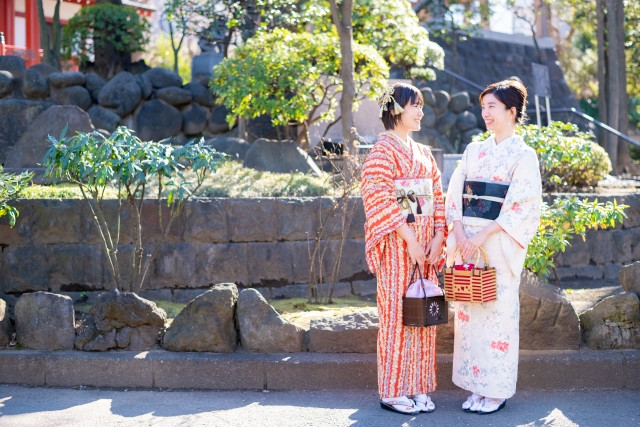
Kimono is Japan’s national costume and has been beloved to the people since a long time ago. Nowadays, Western clothing has become mainstream in Japan and hardly anybody wears a kimono on a daily basis. In recent times, they are usually reserved for special occasions like weddings, shichi-go-san festivals, coming-of-age ceremonies, and tea ceremonies.
Kimonos are attractive because of the beautiful fabrics that can sometimes have intricate designs and gorgeous colours. There are skilled craftsmen who are dedicated to the art of kimono fabric dyeing and creating kimono silk which are considered traditional Japanese crafts.
Yukata 浴衣
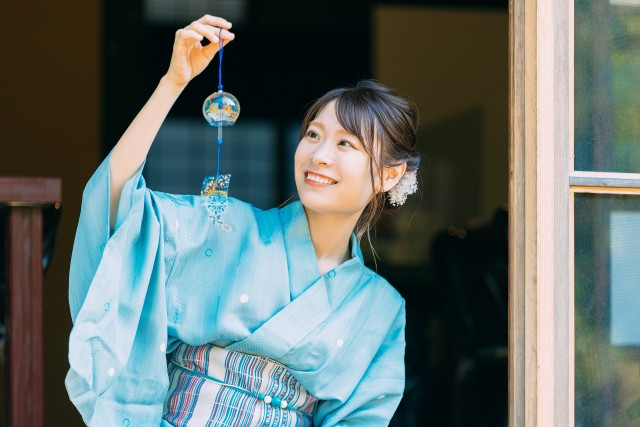
Yukata is considered a type of Kimono. It is thinner and worn in summer. In olden days, yukata was worn as loungewear after taking a bath and also as a nightgown. This practice is still continued at ryokans, Japanese traditional inns as part of the experience. Nowadays, yukata are mostly worn to summer festivals and fireworks festivals. They are considered as casual wear in contrast to kimono which is thought of as formal wear.
Jinbei 甚平

Jinbei is a type of indoor clothing worn by men and young children. It consists of 2 pieces, a top and a bottom. Meant to be worn in summer, the top is short-sleeved and the bottoms are also short. Jinbei are made from breathable material and linen fabric to help alleviate the summer heat. Nowadays, people also wear them out to summer and fireworks festivals.
Hakama 袴
Unlike the above 3, hakama is not an entire outfit but a type of bottoms. Hakama looks like a skirt but is actually a pair of skirt-like pants. It is worn over the lower body of the kimono. Umanori Hakama and Andon Hakama are the most frequently seen hakama in Japan.
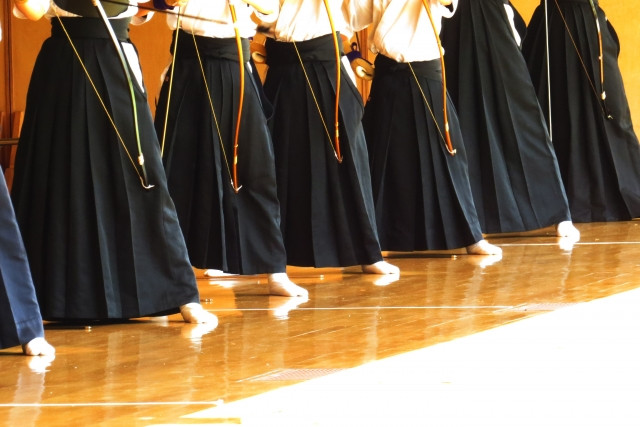
Umanori Hakama have deep partitions for easier movement. They are worn for doing martial arts like kendo (剣道) and kyuudo (弓道) as part of the uniform. In addition, it is common for men to wear umanori hakama for coming-of-age ceremonies and weddings.
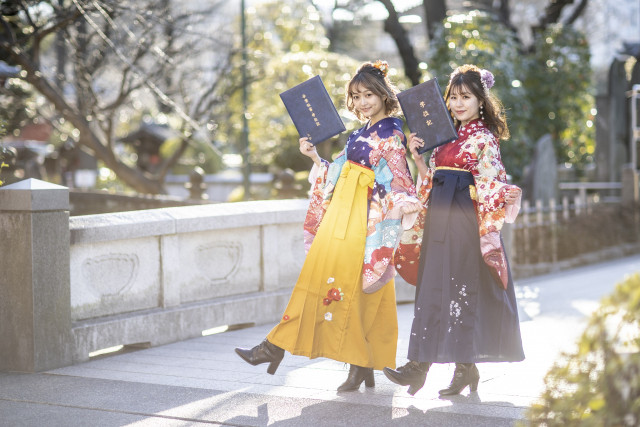
Andon Hakama is mainly worn by women. It is shaped like a skirt and has no partitions. They are commonly worn for graduation ceremonies.
Haori 羽織

Haori is a formal outer coat worn on top of a kimono. This can be for many reasons including fashion, keeping warm when it’s cold out, and ceremonial occasions as a formal outfit. At ryokans, haori is usually available for guests to wear over their yukata during colder months. Haori used to be only worn by men but the custom was eventually adopted by women as well.
Happi 半被

Happi is a casual outer coat. It reaches down to mid-thigh and is decorated on the back with a large symbol or Japanese character. In olden days, happi were worn as work uniforms in lieu of haori and the back decoration would be the shop or organisation’s name. Nowadays, happi are primarily worn at festivals by taiko performers and parade performers but you can also see them used as work uniforms like at some ryokans. As part of recent fashion trends, it is also used as fashionable outer wear over regular Western clothing.
History of Japanese Traditional Clothing
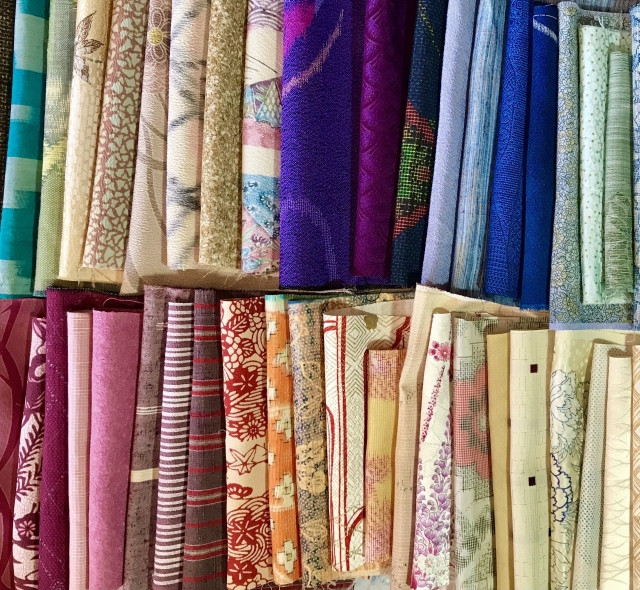
Let’s delve into the history of Japanese traditional clothing. As we mentioned above, Western style clothing has become the norm in Japan. But before that, dressing was very different in Japan. Let’s have a look at what it was like before.
Yayoi to Nara Period
It seems that during the Yayoi period, men would wear cloth wrapped around their bodies whilst women wore a sort of sleeveless dress. During the Kofun period, skirt and pants-like garments were paired with tops to create set outfits.
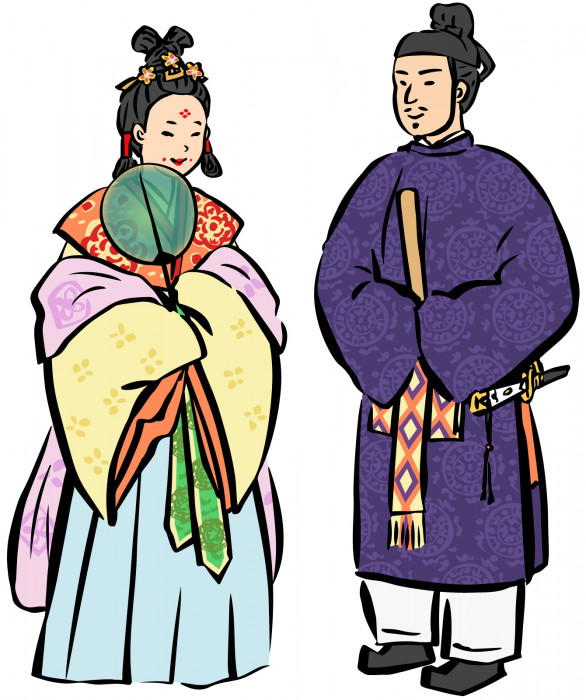
During the Asuka and Nara periods, clothing became fancier with the influence of China and Korea cultures. Men would wear a qipao-like long top with hakama bottoms and a crown as a hat, whilst women would wear a knee length dress paired with a scarf over their shoulders or arms.
Heian Period
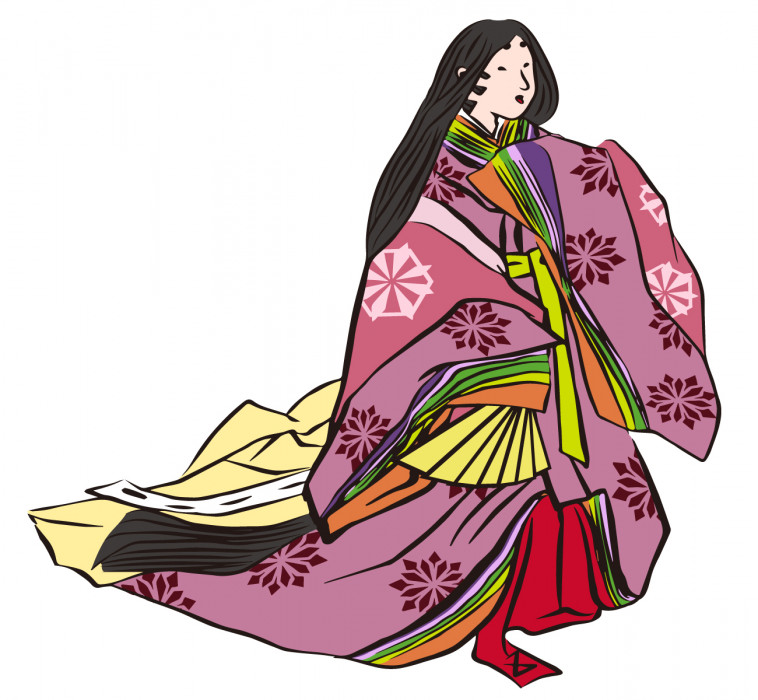
Kimono made with straight-stitch became popular during this period. What is a straight-stitch? It is a basic method of sewing using a straight line to combine pieces of fabric. Moreover, during the same period, the style of layering kimono was established. Colour tone and colour coordination of kimonos became emphasised. Aristocratic women in particular were said to wear particularly gorgeous kimono called「十二単 junihitoe」or 12-layered ceremonial kimono.
Kamakura and Muromachi Periods
Clothing became more interesting in the Kamakura and Muromachi periods when embroidery, dyeing, foiling and other forms of processing and decorating cloth were introduced. Not just amongst the ladies, brightly coloured kimonos also greatly appealed to men.
Edo Period
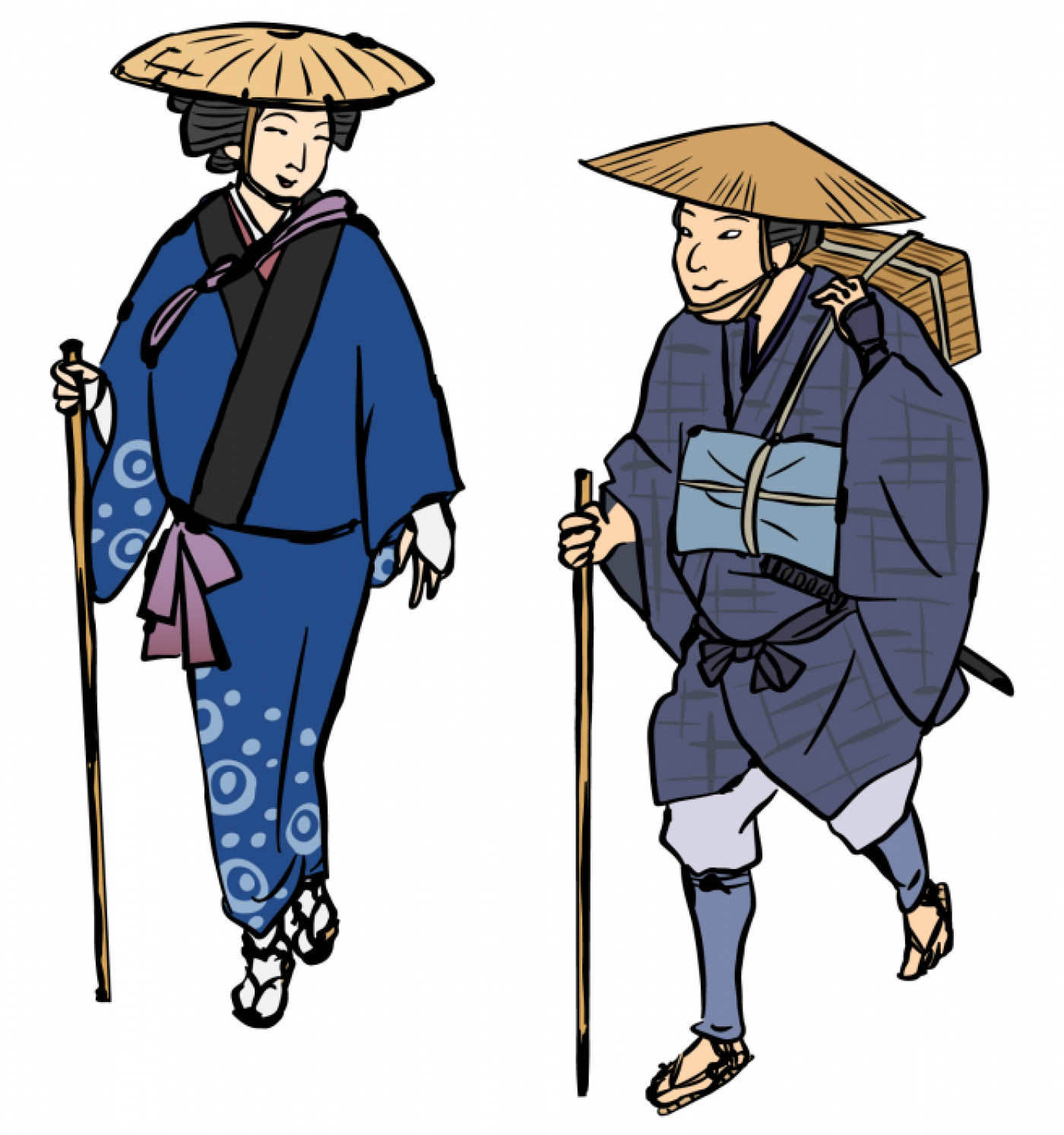
A type of garment called kosode (小袖) came to be worn by the common folk. The kosode had narrow sleeve cuffs, and was said to be the prototype for kimonos. It is said that the original design and fabric for kosode changed under the influence of Yuzen-dyeing, a technique that originated in Kyoto.
Taisho and Meiji Period
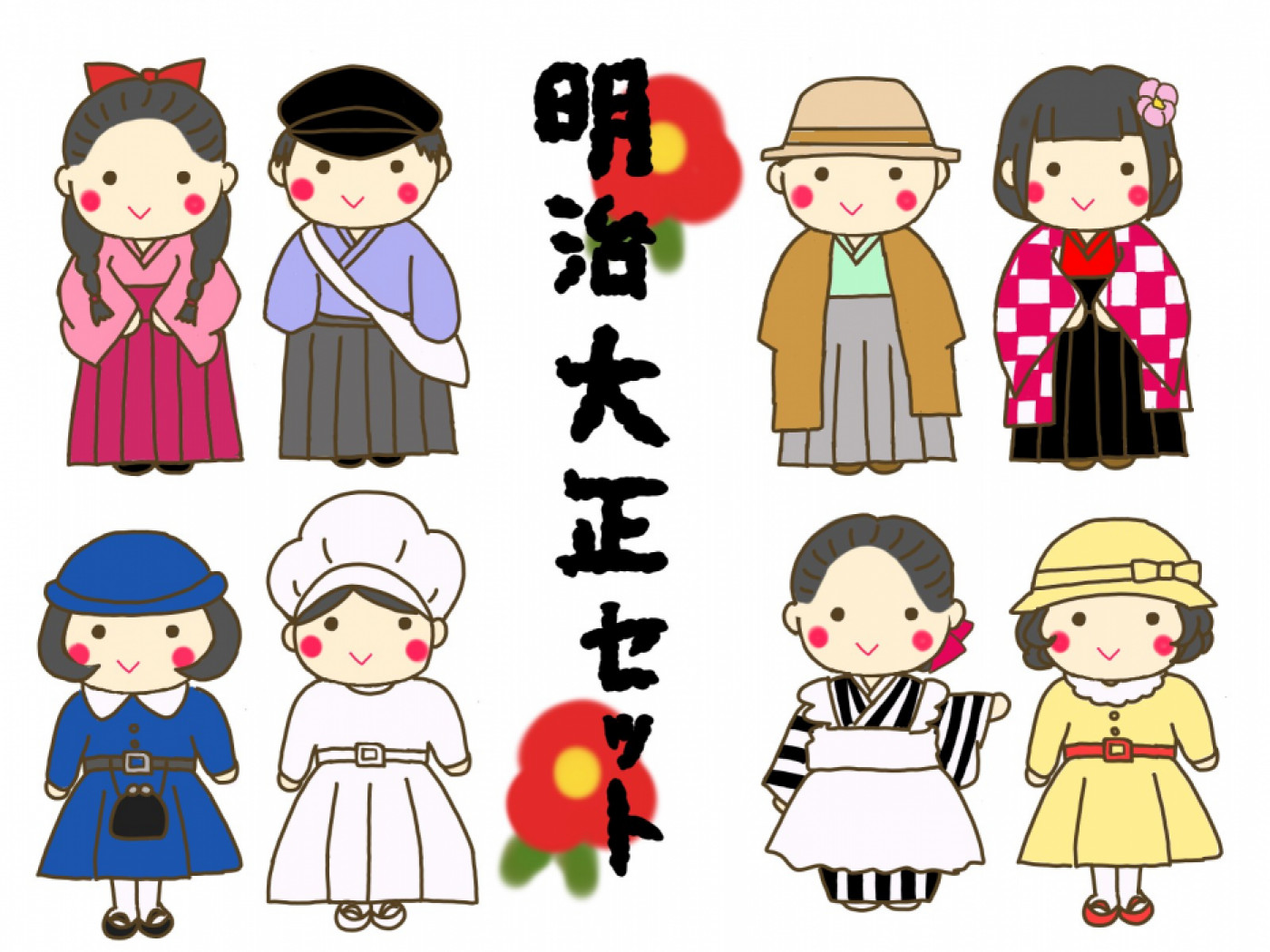
Japan became influenced by Western culture in these periods and this extended to fashion with Westernised clothing. The change was thought to have started when bureaucrats and the military adopted Western clothing. As a result, Western clothing became popular though mainly for men. For women, the change was slower with kimonos being the main choice of clothing until around 1890.
More About Kimono
Considering how important kimono is in Japanese culture, let’s have a deeper look at it.
Different Types of Kimono for Different Occasions
Did you know that there are actually different types of Kimono? There’s black tomesode, long-sleeved furisode, and houmongi for visiting.
Tomesode 留袖
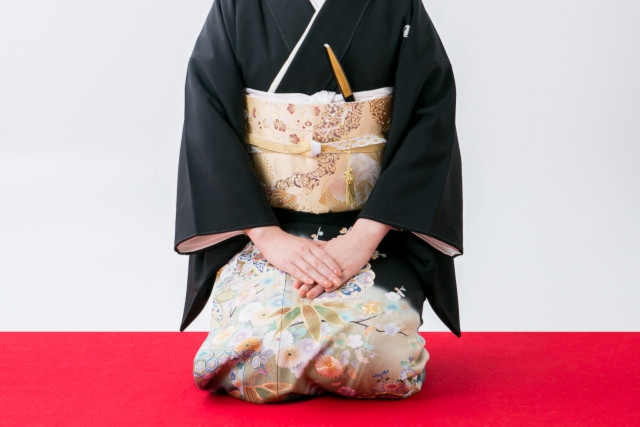
Tomesode is the most formal form of attire that is worn by married women in Japan. It is black in colour and decorated with 5 crests. Tomesode is primarily worn at weddings by the mothers and/or grandmothers of the bride and groom.
Furisode 振袖
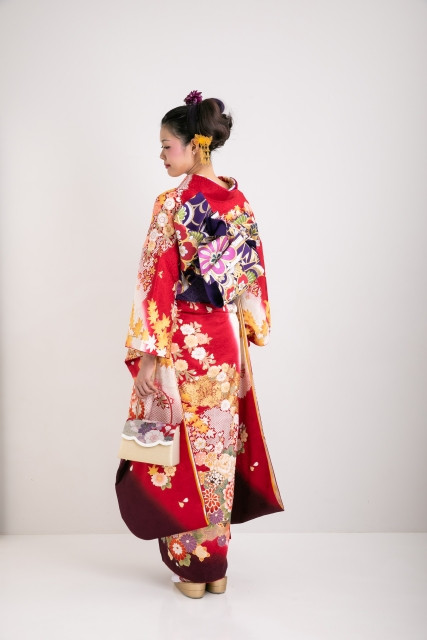
Furisode is a type of kimono worn by unmarried young women. It comes in three different sizes or small, medium and large, each with a different length. The key point of furisode is their long sleeves.The large furisode has a sleeve length of 114cm and is the most formal amongst the three furisode. The medium furisode has a 100cm long sleeve and is worn to coming-of-age ceremonies, receptions, and parties. The small furisode has the shortest sleeve at 85cm length and are usually worn to graduation ceremonies.
Houmongi 訪問着
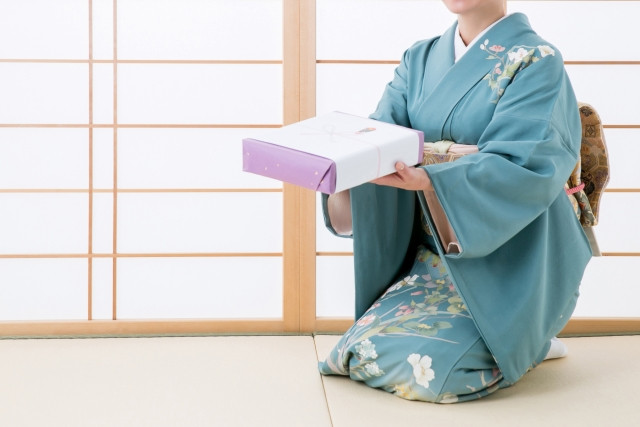
Houmongi can be worn to all types of occasions such as tea ceremonies, parties, visiting people, and performances. Houmongi translates to visiting dress and it is a semi-formal type of kimono. There are no restrictions as to age or marital status when it comes to houmongi so anybody can wear it. It comes in a wide variety of colours and patterns, including classic and modern fabric designs.
Mofuku 喪服
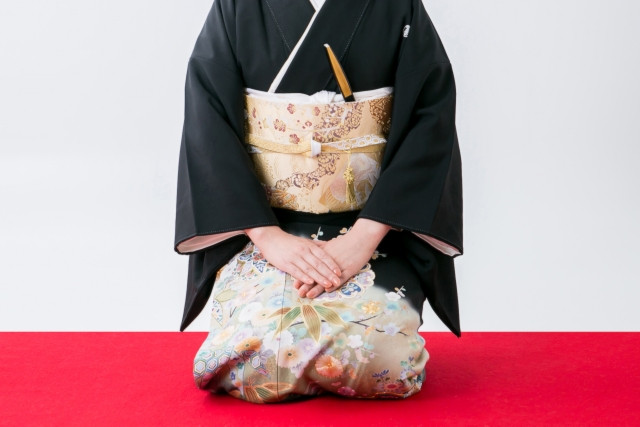
Mofuku are mourning clothes, a black kimono worn to funerals, wakes, and memorial services. It is worn by the chief mourner, family members and relatives of the deceased. It is an expensive attire that is also decorated with 5 crests.
Meaning Behind Fabric Patterns
Kimono patterns are not merely for design and looking pretty, they also carry meaning too! Here are just some of them.
Cherry Blossoms

Sakura pattern represents new beginnings. Cherry blossoms bloom in the spring when entrance ceremonies and graduation ceremonies are held. They carry hope for a new chapter in life and are considered a lucky flower.
Cranes
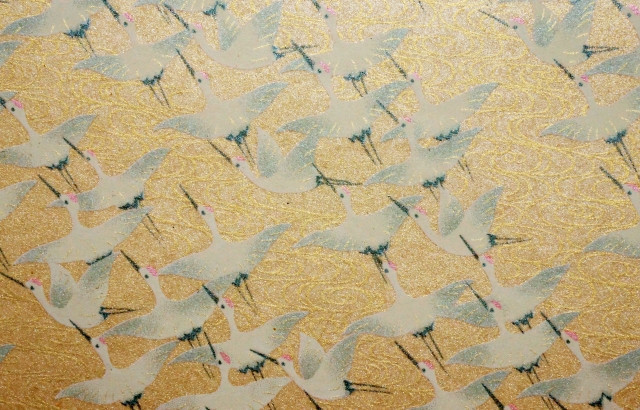
Cranes symbolise a harmonious marriage. In addition, following the saying, 「鶴は千年亀は万年 tsuru wa sennen, kame wa mannen」”cranes live for thousand years, turtles live for ten thousand years, cranes also represent longevity.
Waves

Called seigaiha (青海波) in Japanese, it is a pattern of ocean waves arrange geometrically. The waves that seem almost endless express people’s wishes for eternal happiness.
Chequered
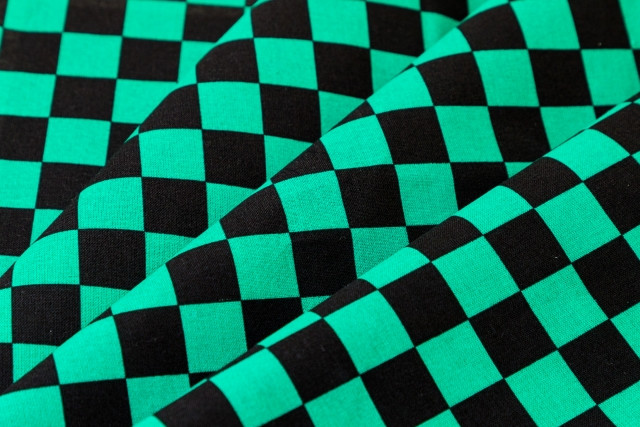
This pattern consists of alternating coloured squares in two colours. A rather simple pattern, it has since made a popular comeback thanks to the hit anime Demon Slayer whose protagonist wears a green black chequered patterned haori. The uninterrupted pattern represents perpetuation of descendants and business prosperity.
Pine, Bamboo and Plum
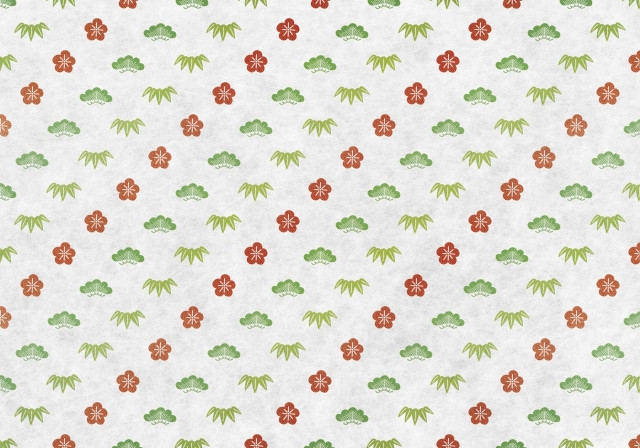
This combination is called shouchikubai (松竹梅) in Japanese; pine (松 matsu), bamboo (竹 take), plum (梅 ume). Together, they represent birth and strength of life. Pine is green all year round, bamboo shoots grow straight up from the ground, and plum blossoms are the earliest spring flowers to bloom at the end of winter.
Takeaway
Now you know that Japanese traditional clothing includes many different types of clothing. Kimono are suitable for formal and ceremonial events whilst yukata and jinbei are for summer and casual wear. It’s a great thing that Japanese traditions have been passed down to our generation. There are fashion brands that have introduced new types of fashion trends in Japan where tradition meets modern style. So cool!



































